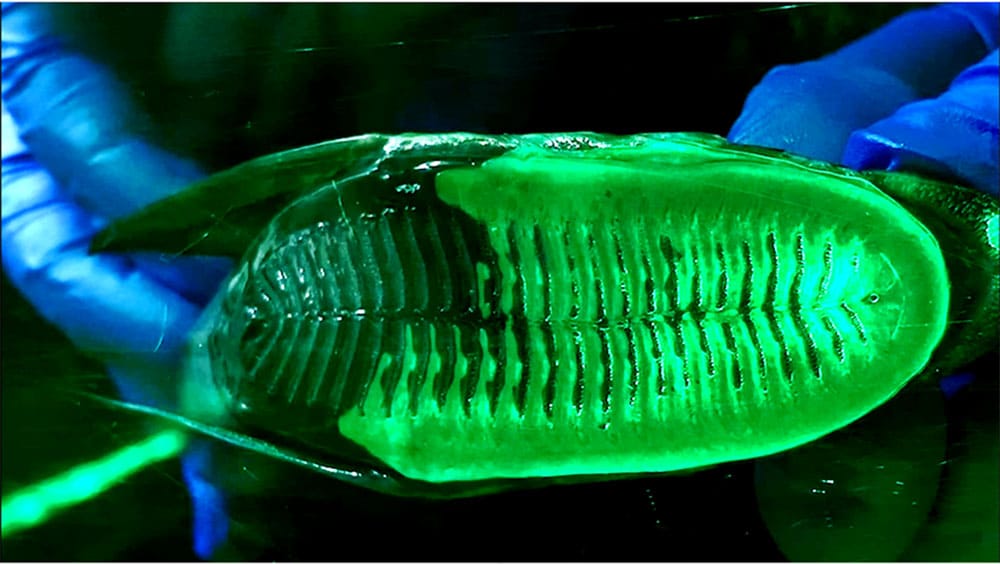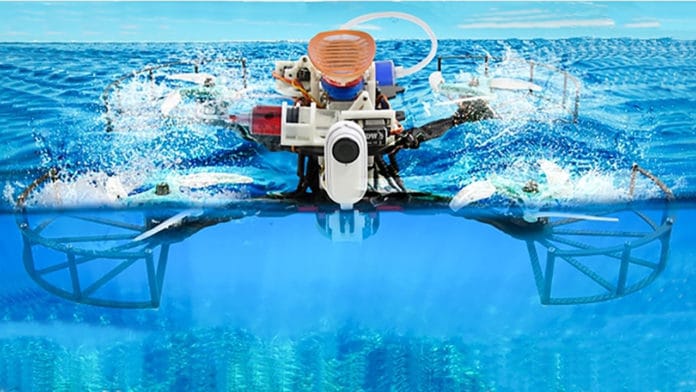A research team, including the robotics experts from Beihang University in China, Imperial College London, and Switzerland’s Empa research institute, has developed a new robot capable of switching from an underwater drone to an aerial vehicle in less than one second.
The robot features a suction disc inspired by the remora fish, which enables it to hitchhike on wet or dry moving objects to significantly reduce its power consumption and attach itself to any surface. The drone is designed for biological and environmental monitoring in marine ecosystems, such as surveying ocean pollution in the open sea.
The ultrafast transition from an underwater drone to an aerial vehicle is based on a new propeller design – making this transition between the different mediums faster than most prior aerial-aquatic robots. According to the researchers, their unique propeller design allows the drone to switch from an underwater vehicle to an aerial one in 0.35 seconds – faster than any other aerial-aquatic robot. To do this, the passively morphing propeller unfolds in the air and folds when underwater.

The untethered drones can help research expeditions and wildlife surveys in expansive or remote environments such as the open sea, but some constraints remain. For instance, untethered drones are not the best choice to use during lengthier missions because they have no external power sources to fall back on if their battery fails.
To address this limitation, the scientists 3D-printed an aerial-aquatic untethered robot that reduces its power consumption through hitchhiking. The robot features a suction pad inspired by remora fish, which are renowned for the adhesive discs that allow them to attach themselves to other marine creatures, such as whales and sharks, to move around. The remote-controlled robot’s disc can stick to wet and dry surfaces with different textures, even on moving objects.
In tests, the robot hitched a ride on a swimming host vehicle to obtain seabed images of hermit crabs, scallops, and seaweed using the inbuilt camera. Underwater, it can attach itself to a submarine or any other swimming host vehicle, thus consuming up to 19 times less power than it would have been for the same operation via self-propulsion.
Through outdoor trials, the team confirmed the robot’s ability to hitchhike, record video during air-water transitions, and operate in both freshwater and saltwater environments.
